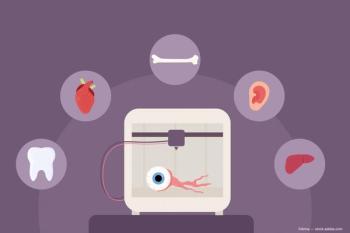
- Ophthalmology Times: August 2020
- Volume 45
- Issue 13
An ophthalmologist faces down COVID-19
A New York City physician describes how he coped with the disease in the early days of its US appearance as well as the silver lining in his diagnosis: a reinforcement of the doctor-patient relationship.
This article was reviewed by Royce Chen, MD
Royce Chen, MD, contracted the virus in early March, when physicians still knew very little about the disease. At that time, before the pandemic was declared, Chen suspected he had a bad cold.
“My symptoms were a little more than those associated with a cold and a little less than those of a flu,” he said.
He described his condition as less than 100%, but he was not incapacitated. His symptoms included a low fever (temperature, 99.5º F) for 2 days, a light headache and fatigue, dry cough, and a red eye, all of which were so mild that they normally would not have kept him from work.
Related:
“At this point, we knew that this was a very contagious virus,” he said. “Because we were aware that affected individuals could be asymptomatic or have minor symptoms, based on data from China, I considered it important to rule out the virus through testing. If I tested positive with these symptoms, it would be important to communicate that to the people in my department so that the residents and fellows would not keep reporting to work if they had similar symptoms.”
Chen has 2 young children, so runny noses and low-grade fevers are commonplace in his household.
He kept in mind the potential for the common cold but wanted to rule out COVID-19, which proved challenging.
Even though the number of cases in New York was rapidly increasing, testing was limited at that time to individuals with high fevers or shortness of breath or who had recently returned from a trip to an area with known COVID-19 activity.
Ultimately, he got tested, and COVID-19 infection was confirmed 5 days later; he had stopped seeing patients and self-quarantined since the start of his symptoms. His wife developed similar symptoms after his cleared, and his children had runny noses—he noted that it is challenging to completely isolate in an apartment.
At the time of Chen’s illness, the guidelines called for returning to work 7 days after the onset of symptoms in concert with improved symptoms and no fever; because of a persistent cough, it was 2.5 weeks before he could return.
Related:
The new normal
As time passed, more was learned about COVID-19’s impact on all aspects of everyday medical life; ie, clinical practices, residents, subspecialties, and personal protective equipment (PPE).
During his quarantine, Chen was involved in what he called seemingly endless Zoom meetings to develop protocols for his residents and his department to keep patients, trainees, and staff safe.
“When I was able to return to work, we were in a much different place regarding the approach to PPE,” he said. “Patients and doctors were now required to wear masks. Practice activity decreased to about 10% of the normal volume.”
Having had COVID-19 and developing antibodies to the virus has given Chen a more secure feeling about resuming practice with at least a modicum of immunity, he said.
Even so, he initially had reservations about returning; he was concerned about how his colleagues felt about his presence and about patient safety.
“Would my wearing an N95 mask be enough to prevent me from spreading it to other people? Was I still infectious?” he wondered.
Related:
“Having the virus gave me a firsthand perspective about the fears and anxieties that patients may have during this pandemic,” he said. “I am able to share my experience and my own fears with patients, and this sharing has allowed me to connect with them on a deeper level. It provides them with both reassurance and more understanding about what the virus can look like, with its many different faces.”
Chen said the silver lining is a reinforcement of the doctor-patient relationship:
“Sometimes you forget how it truly is a relationship, and that patients do not simply present problems that you are trying to solve,” he said.
In light of this, the practice performed many telehealth visits and called several thousand patients to check in, assess their status, and convey the safety and efficiency measures that the practice instituted.
Related:
“Many lonely patients were extremely anxious and were grateful to hear someone asking how they were doing,” Chen said. “Since May, our practice volumes have increased significantly. It has been good to see that the patients recognize that a visit to the eye doctor is a completely different experience now, which alleviates their fears, and it is nice to reconnect with them and share our stories from this crazy time.”
---
Royce Chen, MD
e:[email protected]
Chen is the Helen and Martin Kimmel Assistant Professor of Ophthalmology at Columbia University Medical Center and attending ophthalmologist at NewYork-Presbyterian in New York, New York. He has no financial interest in this subject matter.
Articles in this issue
over 5 years ago
Artificial tears offer a path to contact lens comfortover 5 years ago
Experts review state of AMD in 2020over 5 years ago
Performing follow-up perfects surgical techniqueover 5 years ago
Working with optometrists is winning strategyover 5 years ago
Physicians’ treatment decisions are reinforced with good dataNewsletter
Don’t miss out—get Ophthalmology Times updates on the latest clinical advancements and expert interviews, straight to your inbox.













































